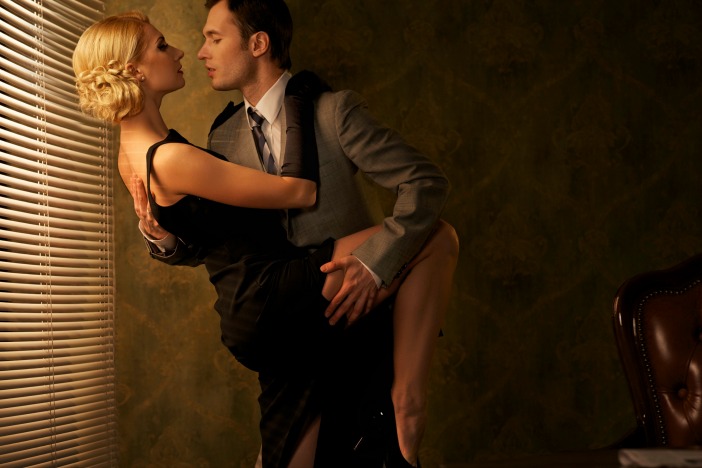What is leading and following in ballroom dancing?

It doesn’t necessarily mean that “the leader” is the boss, as a happily married man I know that my wife is truly in charge but she’s smart enough to let me feel in charge when we’re on the dance floor. As a man it’s an awesome rush when your partner does whatever you ask, with elegance and poise. A great follower enjoys the ride. When dancing a Waltz it’s kind of like riding shotgun in a smooth Cadillac and Salsa is like speeding down the road in a limber Porsche. The follower gets to enjoy the ride while the leader gets to press all of the buttons.
The Roles – In social partner dancing, the leader and follower have different roles.
The leader – keeps time, and suggests, through his lead, the figures that will be executed in a dance. That means the leader has the job of maintaining the rhythm, knowing the figures of a dance, and deciding what figures he is going to lead, in addition to actually leading them.
The Follower – through reading the signals of the lead, executes the suggested figures. Connection is extremely important, because it is through the connection that the lead is communicated.
Timing – leader has to keep a time that the follower can match. So make sure that you pay close attention to the bass of the music and develop a strong understanding of the rhythm of each dances. It is the leader’s responsibility to keep the partnership in time with the song that you are dancing to.
Floor Craft – leading involves more than merely guiding one’s partner through a sequence. It must be done in such a manner that the dancers conform to the general floor pattern and maintain the smooth and even flow of movement around the dance floor. Each dancer must be constantly aware of the imaginary but very definite line that guides the dancing circles. Each figure must be started in proper position and direction with each step timed and “sized” to avoid collision with other couples.
Closed Dance Position
These 5 points of contact are essential to achieving a balanced dance position.
1) Hand to hand, the leader has his left hand at about the follower’s eye level. The follower puts her right hand in the leader’s left hand.
2) Leader places his right hand on the follower’s shoulder blade. The hand position is such that you could both push and pull (gently, of course), with no gaps between fingers and thumb.
3) Elbow to elbow, follower lightly rests their left elbow on top and slightly outside the leader’s right elbow.
4) The follower places her left hand on the leader’s shoulder, pressing against it lightly to create a connection. Hold your own left arm up, follower.
5) Diaphragm contact, as a partnership develops you will be balance and synchronized enough to be able to hold each other close enough to make “body contact” Both leader and follower stand slightly offset to each other’s left and with their weight over their toes.
There are several other details that I could outline in trying to help folks understand what makes a good leader or follower, but I decided to just outline the essentials. As I always say “in dancing the man is the frame, and the lady is the picture”. A solid frame enhances the beauty of the picture.
I hope you enjoyed.
{{cta(‘43500d83-81cd-4af8-acfc-d260b56d29e9’)}}
Leave a Reply